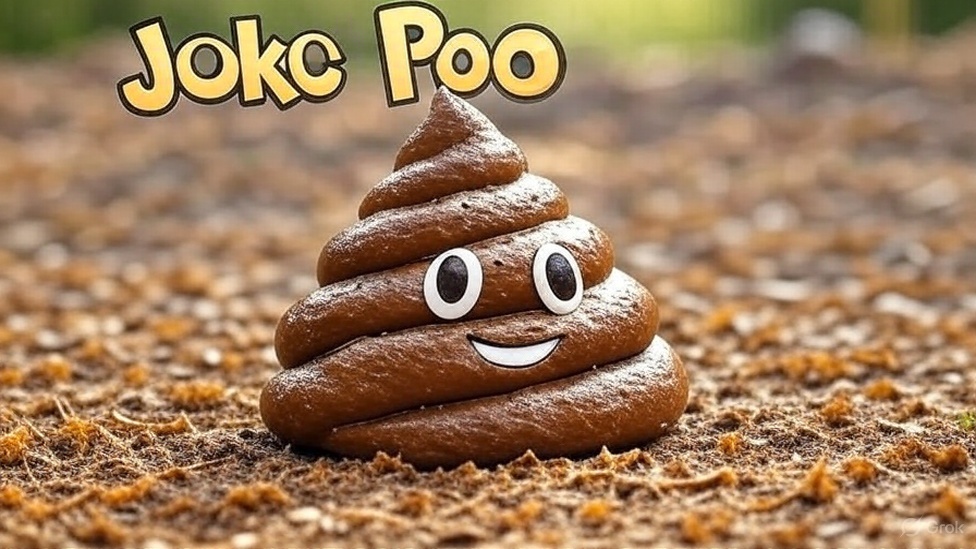She left a note on the fridge that said “This isn’t working, I’m leaving.” I opened it, it worked just fine.
Original Joke:
My girl left me…I don’t get it… She left a note on the fridge that said “This isn’t working, I’m leaving.” I opened it, it worked just fine.
Joke Poo: My Compost Pile
My tomatoes weren’t growing… I don’t get it… I checked the compost pile, and there was a tiny note sticking out that said, “This isn’t breaking down, I’m leaving.” I forked it, and it turned over just fine.
Explanation of Changes:
- Character Change: Replaced the girlfriend with tomatoes.
- Setting Change: Replaced the fridge with a compost pile.
- Key Item Change: Replaced the note with a note in the compost pile.
- Core Assumption Shift: Instead of a relationship breaking down, it’s about the process of composting.
- Similar Comedic Structure: The joke still relies on the double meaning of “isn’t working/breaking down.” In both the original and the new joke, the narrator takes the message literally, despite it being a clear metaphor for a larger issue.
- Surprising Twist: The ending still hinges on the literal interpretation that the item in question is technically working as intended when looked at in isolation.
Alright, let’s break down this comedic gem:
Deconstruction:
- Setup: “My girl left me…I don’t get it…” – Establishes heartbreak and confusion, setting a somber tone that’s ripe for subversion.
- Punchline Structure: The joke employs a classic bait-and-switch. We expect a reason for the breakup relating to the relationship not working. Instead, the punchline reveals the narrator is confused about the refrigerator not working.
- Humor Source: The humor comes from the misinterpretation of “working,” the literal-mindedness of the narrator, and the unexpected trivialization of a serious situation. It plays on our expectations and the common phrase “this isn’t working” in the context of relationships.
- Character Portrayal: The narrator is portrayed as somewhat clueless, possibly naive, and definitely focused on the concrete rather than the abstract.
Key Elements:
- Breakup/Relationship Failure: The core premise.
- Refrigerator: The unexpected focal point.
- Misinterpretation/Literal-mindedness: The engine driving the humor.
- The “Note”: Serves as the conduit that highlights the difference between expectation and reality
Comedic Enrichment – Option 1: Witty Observation
“Relationships ending via fridge note are becoming a real epidemic. I blame smart fridges. They probably offer passive-aggressive suggestions like, ‘Maybe she’d stay if you bought organic kale.'”
Explanation:
- This observation plays off the increasing prevalence of smart appliances and satirizes the intrusion of technology into personal relationships.
- It builds on the original joke’s premise by suggesting the fridge itself might be a contributing factor to the breakup.
Comedic Enrichment – Option 2: A “Did You Know?”
“Did you know that in the Victorian era, ‘ice boxes’ (the precursor to refrigerators) were often placed in the parlor, not the kitchen? So, if that guy’s girlfriend had left him a breakup note on that icebox, she might have been subtly hinting that their social life was frozen solid, not just their leftovers.”
Explanation:
- This leverages an interesting historical fact to add another layer of comedic interpretation.
- It cleverly suggests that the placement of the “fridge” (or ice box) might have been a metaphor for the state of the relationship, adding a layer of sophistication to the joke.
Comedic Enrichment – Option 3: A New Joke
“My therapist told me I have attachment issues. She said I’m overly dependent on inanimate objects. I told her, ‘That’s ridiculous! I can totally let go of… wait, where’s my refrigerator magnet collection?!'”
Explanation:
- This joke takes the idea of attachment and expands it beyond the original context.
- It highlights the character’s literal-mindedness and inability to recognize his own issues, creating a new comedic situation. It also brings in another layer, not just that the fridge is “working” but that it’s actively being used.
By dissecting the original joke and understanding its core components, we can use related facts and observations to build upon it and create new, hopefully amusing, content.


